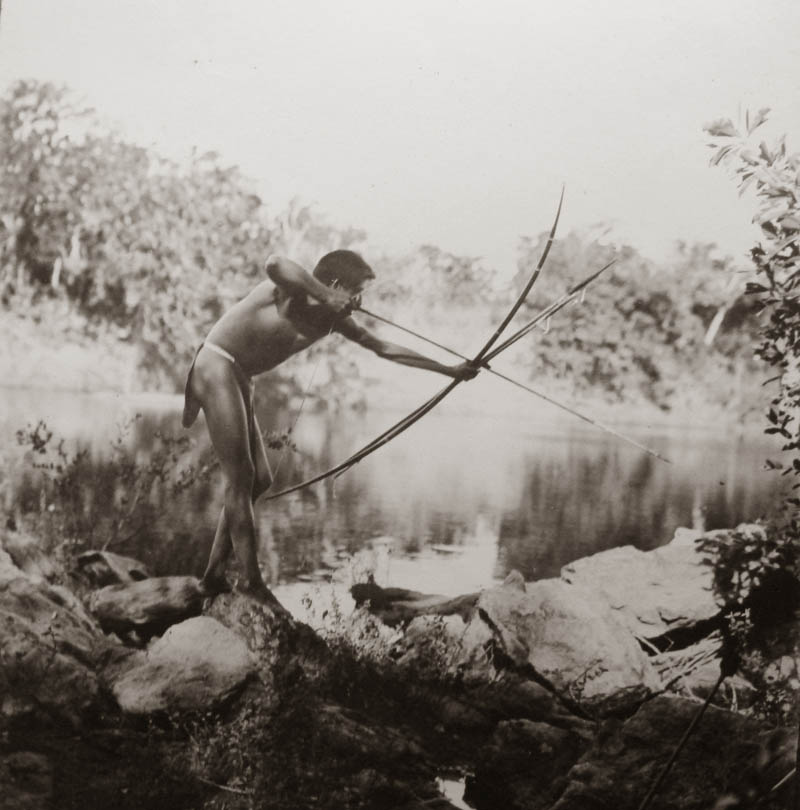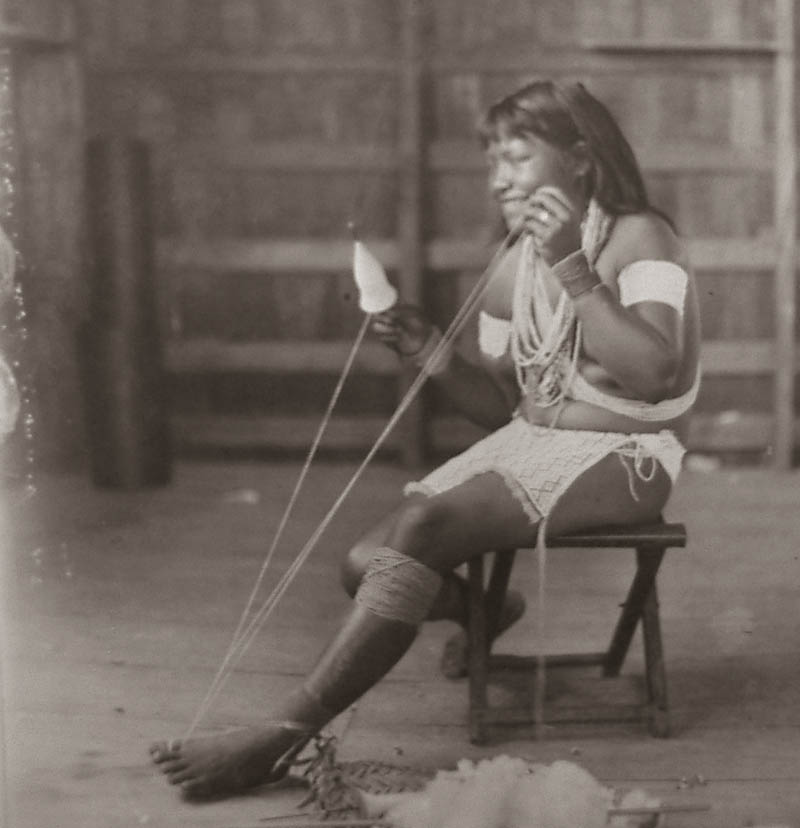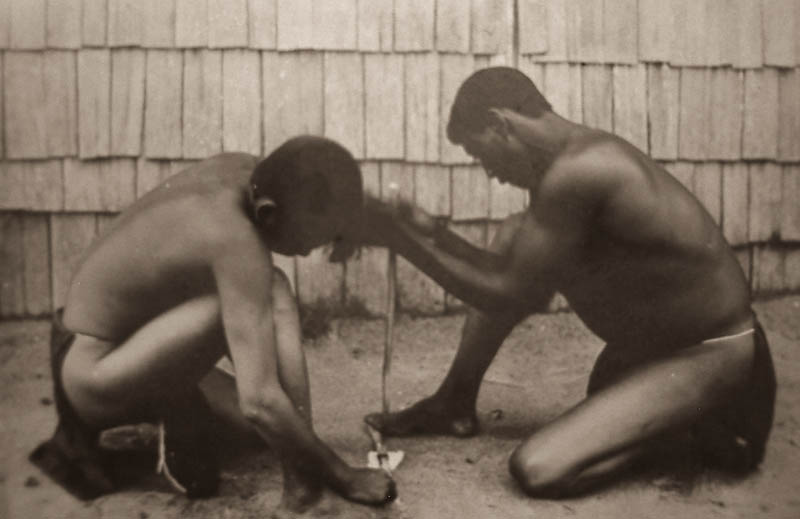by Peter Halder
The Wai Wai is now an endangered Amerindian tribe in Guyana. In 2007, according to International Cry online website, there were only 240 Wai Wai left in Guyana.
Amerindian Tribes
The Wai Wai is one of nine indigenous Amerindian tribes in Guyana. The others include the Patamona, Arecuna, Macusi, Wapisiana, Carib, Warrau, Arawak and Akawaio.
Meaning
Wai Wai means “tapioca people” and they were given that name because of the enormous amount of the tapioca (cassava) they eat.
Early History
The Wai Wai people and its tribal territory were discovered by the famous explorer R. Schomburgk during his exploration of the province of Essequibo in 1837.
Religion
U.S. Protestant Missionaries established a permanent Christian Mission near the Wai Wai tribal area in the 1950s. The Paramount Chief of the Wai Wai and his tribe converted to Christianity by the end of the 1950s.
Location
The Wai Wai live in small remote villages in the southernmost tropical forest of Guyana. They migrated from Brazil in the early 19th century and their population increased to some 1,250. As the tribe expanded , so too did trade and marriage contracts. When the Protestant Mission was established, nearly all the Wai Wai relocated near to it. In the 1970s, due to the uprising in the Rupununi area and events that followed, there was massive re-migration of the Wai Wai back to Brazil. By 1989, there was only one major tribal area remaining.
Dialect
The Wai Wai dialect is similar to that of the Carib. The Umana Yana Amerindian structure in Kingston, Georgetown, is a Wai Wai word meaning “meeting place.”
Tribal Land
Their tribal land, to which they hold title, covers about some 2,300 square miles. The area is known as Konashen and includes the headwaters of the mighty Essequibo River.
The paramount Chief of the people is the Kayaritomo. The Medicine Man is called a Yaskomo.
Culture
The Wai Wai is an artistic tribe that makes beautiful baskets and many other craft, including pottery, woven combs, bone flutes, bows and arrows, blow guns, graters, beaded aprons and necklaces.
Their traditional dances are known for imitating the movements and calls of various forest animals and birds.
Livelihood
The Wai Wai have a subsistence way of life. It is based on farming, hunting and fishing. The cycle of dry and rainy seasons produce plenty during the former and scarcity during the latter. Their main farming crops are bitter tapioca (cassava) used to make bread (cassava bread), farina, casareep and drink (pywari and cassiri). They also plant fruit trees, arrow cane and cotton. The forest provides building material, wild fruits and nuts. The men hunt with arrows, bows, trained dogs and sometimes shotguns. Their meat supply comes from the wild cow, wild hog, labba, accouri, deer and wild fowl. Many varieties of fish are caught.
In 2007, during the second Latin American Parks Congress, the Wai Wai tribe of Guyana declared their land a “Community Owned Conservation Area” The tribe has banned mining and logging from their land in the tropical forest in remote southern Guyana near the Brazil border. They have pledged to pursue a sustainable economic strategy based on eco-tourism, research and traditional crafts. The paramount aim of the people is the preservation of their culture. Some of the tribe plan to become Forest Rangers. “We have always been keepers of the forest that support us, “ said the Kayaritomo.
Major Events
One major event for the Wai Wai was when the Governor-General of Canada, Sir Roland Michener, visited them in the 1970s. A Guyana Foreign Service Officer who was with the delegation said it was a surprise when the visitors discovered that the Wai Wai had evolved an indigenous religion, based on Christianity, which they called the “Hallelujah Religion.” He also said that when a block of ice was unloaded from the aircraft that took the official delegation to Konashen, a Wai Wai put his hand on the ice, shouted, withdrew it quickly and fell to the ground in reverence. The Wai Wai had never seen ice before.
Another had to do with the church which served the area. The Chief requested a piano for the church from a British citizen who visited the tribe. A Grand Piano was flown by BWIA to Guyana in 2000. The 800-lb piano was then transported by Skyvan to near Konashen and then, while still in the crate, was dragged to the church where it was later installed.
Amerindians of Guyana
The Amerindians in Guyana, called “Children of the Forest” number 55,000 and their population is expanding. They live in 120 communities in the hinterland, mainly in : Region 1 – Barima/Waini;
Region 7 – Cuyuni/Mazaruni;
Region 8 – Potaro/Siparuni; and
Region 9 – Upper Takutu/Upper Essequibo.
The tribal distribution is as follows:
Region 1 – Warrau/Arawak/Carib;
Region 7 – Akawaio/Arecuna;
Region 8 – Patamona/ Macusi;
Region 9 – Macusi/Wapisiana/ Wai Wai.
Sources:
Every Culture
International Cry
Guyana News and Information
* Photographs are not necessarily of the Wai Wai people and are from the R.H. Carr family album provided by Armorel Clinton.



A beautiful people soon to be wiped out. How tragic! We are all Guyanese, and we must do something about this.
A sad reality is that the Guyana government is giving serious consideration to begin logging in the native home
lands of these indigenous people.
The dilemma seems to be that the government badly needs an infusion of cash, while desperately trying to
maintain the pristine beauty of our jungles.
The Wai-Wais will inevitably be a causality in the name of so-called progress.
I fear that we will go the way of the other South American countries where short-sighted governments in a bid to
swell coffers, are finding it is now too late to stop the deforestation of the rainforests.
Brent Ferdinand-Whinfield
Toronto, Canada.
Comment by Brent Ferdinand-Whinfield — June 13, 2011 @ 4:13 am |
[…] by Professor Mentor of the Anthropology department at UMW. Her presentation discussed the Wai-wai people of Brazil, where she has done most of her research. The Wai-wai, along with most Amazonian cultures, are […]
Pingback by Why you shouldn't have babies. » Blog Archive — April 11, 2012 @ 10:21 pm |
read Nicholas Guppys book”Wai Wai”and how these wonderful people lived with their art and management of land without the interferance of modern man with its greed and destruction.Lessons to learnt here.We need the forests for the evolution of life,and tomorrows medicinesand for weather patterns.
Comment by a human being — June 12, 2012 @ 8:30 am |
A beautiful and humble people living off the land . Sometimes wary of strangers , but this is expected when one considers the cruelty inflicted on these simple people by mean and despicable land grabbers. This month is Amerindian Heritage Month and I do hope that more attention is given to the slow extinction of these nine Amerindian tribes and more pro-active measures are put in place to deal with this issue.
Comment by Rowena — September 13, 2013 @ 12:48 pm |
I live in Mexico and I am really interested in knowing more about the Wai Wai culture. I want to learn more about their ways to work together as a community. I found very little information online. Any recommendation for finding more information will be very appreciated.
Comment by Daniela — October 1, 2014 @ 6:24 pm |
TRy the book “Christ;s Witchdoctor by Homer E. Dowdy. Harper and Row 1963. I depicts a lot of the tribal culture and beliefs.
Comment by Wayne Brooks — March 24, 2017 @ 11:28 pm |
The reality and the aim for the indigenous people throughout the American continent is to reclaim their land like is done in Bolivia. My wife is indigenous Brazilian and i see the reality of how these people are being treated and again i will say the Whites/Africans or what ever you are living in America you are all-immigrants or to say foreigners and you all must respect the indigenous people if you don’t go back where you came from Europe and what other part you all came from
Comment by Satere-Mawe — March 2, 2015 @ 7:13 pm |
my grandmother is from the wai wai tribe and i have been finding ways for me to make contact. Can someone please tell me how best i can do this. When i next visit Guyana i would love to meet people of wai wai tribe
Comment by kerri — May 11, 2015 @ 11:02 pm |
Kerri, did you ever hear back from anyone on this?
Comment by Kevin P. — February 16, 2022 @ 6:24 pm |
The picture of the Amerindian fishing with a bow and arrow was taken in 1910. My dad was 8 years old at the time and remembered that day very well. It is our “Uncle Henry”. I hope the information is updated. There are about 4 different stamps with him on it.
Comment by Ted Melville — April 3, 2018 @ 2:04 am |
Hi, my name is Armand Crown from New Zealand. Arawa and Tainui are two major tribal groups that make up the native Maori population here. My PhD is based on the notion that these groups are in reality Arawak and Taino, further more there is a Waiwai group here as well. Next year we will attempt to do a Dna comparison between the two Wai wai groups as scientific evidence in support of oral traditions recorded in 1850, giving a history of their arrival via the Marquesas/Tahiti region of the Pacific.
Comment by Armand Crown — August 2, 2018 @ 8:03 am |
Armand, your work sounds very interesting. I am told that my great-great grandmother was Wai-Wai and my father, grandmother and her father were all born in (then) British Guiana. I would love to trace my heritage back through DNA and would be happy to provide my 23andMe or Ancestory results to you. I know it has been a few years since your post but hope you receive my response.
Comment by Kevin P. — February 16, 2022 @ 6:23 pm |